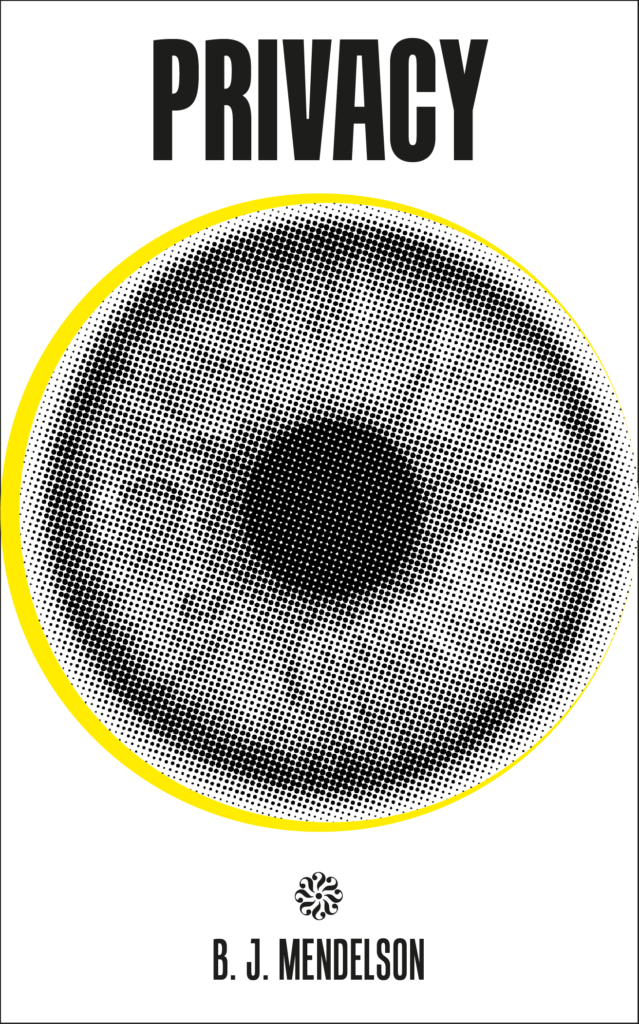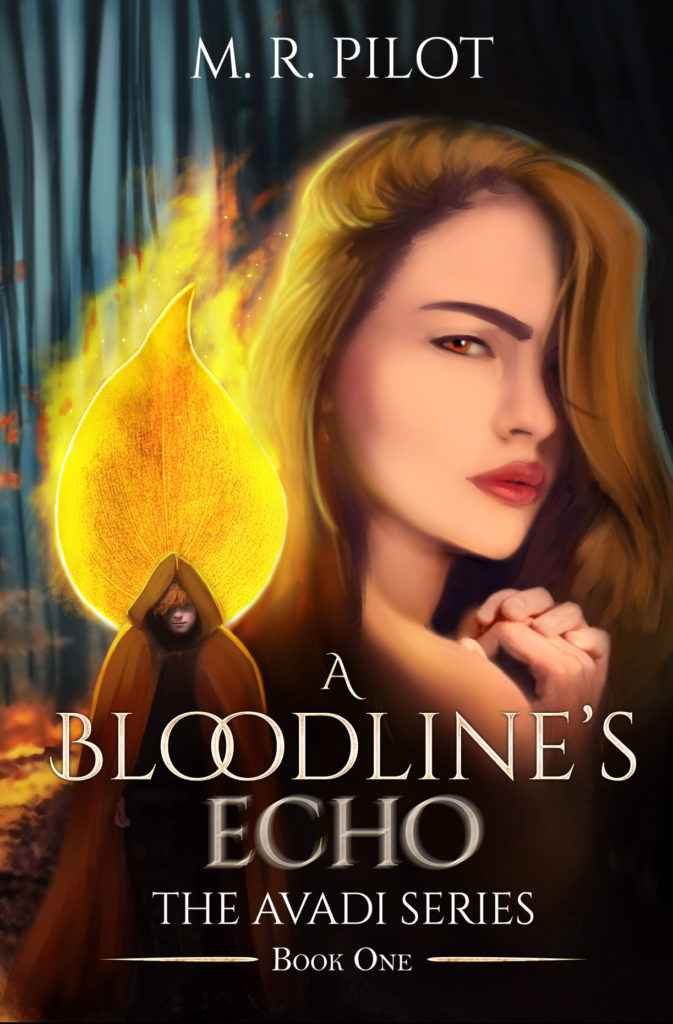
I wasn't a big reader growing up. I watched a lot of comedy though, and their style and voice, the way they told stories, inspired how I write.
B.J. Mendelson – 24 March 2018
The Back Flap
In this forceful short book, technology guru and author of the best-selling Social Media is Bull (St. Martins Press) B.J. Mendelson exposes the crude reality behind the smiley face of internet networking: data trading. We are all auctioning our personal information, the book argues, to the highest bidder. Mendelson discusses the end of privacy from a contemporary perspective, including chapters on:
* Metadata and its uses
* Data auctions
* The Internet of Things
* The use of social media for surveillance and suppression
* Just how safe is Cloud technology
* The Big Business of Big Data
* How online retailers stalk, without permission, their customers
* Anonymous and web activism
* The internet's dark side: Silk Road, hacking, extortion
* EFF and other bodies promoting internet user rights
When we talk about the so-called 'end of privacy', we conjure up images of state-run agencies secretly monitoring and recording our every move. Whilst this is the case, the true perpetrator in this permeating culture of intrusion is not a third party; its our very selves. We willingly broadcast every moment of our lives in exchange for a moment's worth of virtual attention. Mendelson, artfully and through personal narratives and journalism, tells the story of how we have undermined one of our greatest societal assets.
About the book
What is the book about?
Basically, I think what we think of when we think of the word "privacy", is dead. So, if that's true, then the question becomes what do we do now? The book is an attempt to answer that question.
When did you start writing the book?
In the Fall of 2015. I was taking graduate classes at the University at Buffalo, mostly due to boredom, and some of the research from those classes took me into the realm of privacy. From there, I realized that a lot of the books on the subject are kind of dull, and set out to write something that was more entertaining and friendly for the general audiences.
How long did it take you to write it?
Two years, all told. The book vanished into a blackhole for a while, but it was rescued and resuscitated by my editor. But if you count the time I spent working on it, it adds up to two years.
Where did you get the idea from?
I think I hit on a lot of this stuff in my first book, Social Media is Bullshit (St. Martin's Press), without realizing it. And so this book gave me the opportunity to look at some of the problems the first book addressed and tackle them from a new angle. Like Facebook telling people they have over a billion users, but then not defining how they calculate their users. Why flat out lie about stuff like that? The answer is money, advertising dollars, and to keep those dollars coming, your privacy is getting eroded in the process.
Were there any parts of the book where you struggled?
My OCD wasn't really treated until the Fall of 2016, so I struggled in 2015 with this book, and other projects. Once I got that under control, it was relatively smooth sailing.
What came easily?
If you count the ghostwritten book I did, I've now done three books on the subject of tech companies and the shady things they do to make a buck. So at this point I can just close my eyes and write this stuff, which is great on one hand, but now I realize I need to start writing about other things otherwise this act will get stale.
Are your characters entirely fictitious or have you borrowed from real world people you know?
I wish some of the people I wrote about were fictitious.
We all know how important it is for writers to read. Are there any particular authors that have influenced how you write and, if so, how have they influenced you?
George Carlin, Charles Bukowski (or at least, the David Duchovny version of Bukowski from "Californication.") Bill Hicks. I used to say Bill Cosby, but any mention of him now makes my skin crawl. You'll notice I went with three comedians, that's because I wasn't a big reader growing up. I watched a lot of comedy though, and their style and voice, the way they told stories, inspired how I write. That's why when people read my stuff, it's so conversational and simplistic. I'm writing for the stage and for comedy, and in order to do that, everything you write needs to be simple, clear, and logical.
Do you have a target reader?
No, honestly. I should. This is the worst answer you can give as a marketing person, but I try to write for a general audience because it's in the interest of the tech companies to leave the general public in the dark about how they make their money and what they're doing to people in order to accomplish this.
About Writing
Do you have a writing process? If so can you please describe it?
There's a lot of porn involved. It clears my head. Usually the more outrageous the better. I wish I had a better answer, but this has honestly been my system since I was 18 and clearly it's worked, so I'm not about to bullshit you.
Do you outline? If so, do you do so extensively or just chapter headings and a couple of sentences?
I'm a fanatical researcher. Even if it's for a single paragraph, I'm on the phone talking to at least three sources and looking up obscure facts and academic papers to support (or disprove) any claim that I'm making. So from the research comes the outline.
The only time I use an outline is when I'm writing fiction, and that's only to keep me honest because my attention wanders.
Do you edit as you go or wait until you've finished?
I mentioned the OCD. It makes me a great editor. Slow, but great. So I edit as I write. This makes me slower than most writers out there today (it's why I don't freelance or do guest posts or anything like that. It's because I'm so slow.)
Did you hire a professional editor?
Yes. I used Roger Wilco to edit Privacy: And How We Get It Back, as well as two of my friends who are professional (re: paid) freelance writers and authors.
Do you listen to music while you write? If yes, what gets the fingers tapping?
Oh god no. I need complete silence. I get really irritated by any noise or disruption when I'm writing, so I just need to be left alone for a while in silence to do my thing.
My sister listens to music when she writes and it drives me crazy.
About Publishing
Did you submit your work to Agents?
I did for the first book. I have an agent. Occasionally I'll bother him with stuff, but I rather just publish this stuff myself at this point. The only pain in the ass about working with small publishers or publishing yourself is that your book won't be in stores (and a lot of libraries) without a tremendous amount of work. But with the way I write, even though I write for a general audience, my stuff is pretty polarizing. You either like it or absolutely hate it. So I know I'm never going to be some huge name author, nor do I want to be. I'm totally fine having an audience of, let's say 50,000 people (at most), and having them buy my stuff when it comes out.
What made you decide to go Indie, whether self-publishing or with an indie publisher? Was it a particular event or a gradual process?
I am happy and thankful to have worked with St. Martin's Press, but I like the freedom and flexibility that comes with going indie. I can do (almost) anything I want.
Did you get your book cover professionally done or did you do it yourself?
So far, I haven't been able to choose the cover for all three of my books. I'm hoping that'll change with the next one.
Do you have a marketing plan for the book or are you just winging it?
I have a background as a marketer, so I have an extensive plan for every book. The good news and bad news about being an author is that most people don't read. That's the bad news. The good news is that those who do can be reached through radio and podcasts, live events like book signings, and good old fashioned PR. So you don't have to make yourself crazy with a marketing plan for books, you just have to know how to hit those three points.
Any advice that you would like to give to other newbies considering becoming Indie authors?
Once you understand that it's unlikely you'll be a famous or best-selling author, there are few reasons NOT to go indie.
As far as advice goes, the best marketing tip I can give everyone reading this is to collect as many physical mailing addresses, emails, and phone numbers that you can. Everything else is bullshit (or controlled by an algorithm) and it's difficult to reach your fans and friends. Snail mail, email, and phone are the best, pure ways to reach people, and so you want as many of those as you can get. That "1,000 true fans" thing is bullshit unless those 1,000 fans are incredibly wealthy, but 10,000 to 50,000? It may sound like a lot, but I'm convinced anyone can get there if they put the time in.
About You
Where did you grow up?
Monroe, New York. Everyone knows this place as the home of Woodbury Commons Premium Outlets. My high school, the insane ayslum-looking building, can be seen across the street from the mall.
Where do you live now?
Since 2012 I've lived a mostly nomadic existence of hotel rooms, airbnbs, and my parent's house. I have two mentally disabled brothers and a mom that requires a lot of attention, so increasingly I'm back in Monroe to help my Dad out as he's getting up there in age.
What would you like readers to know about you?
That I subscribe to the Buddhist belief that we're just all one consciousness experiencing itself subjectively. And for that reason I don't take much seriously other than to treat others as well as I can treat them.
What are you working on now?
My next book is called Don't Be Evil: A Short Guide to Being a Successful Human, and if all goes well with the promotion of the privacy book, that should buy me enough time to finish it and get it released some time in 2019.
End of Interview:
For more from B.J., visit his website.
Get your copy of Privacy: And How to Get it Back from Amazon US or Amazon UK.
from The IndieView https://ift.tt/2GcWqwp


























